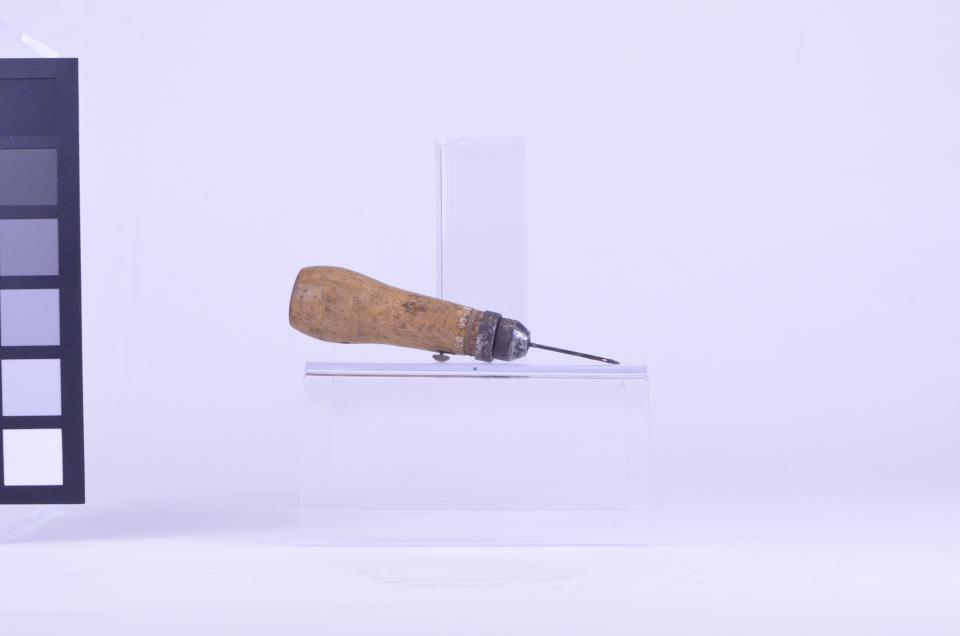
L: 15.1 CM X D: 3.5 CM
A sewing awl that features a bulbous wooden handle which tapers slightly before being covered with a metal cap, with a metal shaft extending out from the wooden handle and metal cap. The bulbous portion of the handle (the base) is hollow. The metal shaft has a metal, threaded chuck with knurling for grip, used to secure the bit to the shaft of the awl. The bit features a straight metal body, with the bit bending slightly in one direction towards the tip featuring an eyelet, until tapering to a fine point and terminating.
The cobbler's sewing awl, a specialized hand tool with a sharp, pointed blade and an eye for thread.
Used primarily for piercing leather and stitching it together, the awl allowed cobblers to create strong, durable seams for shoes and boots. Its origins trace back to ancient leatherworking traditions, with refined designs emerging in Europe by the 16th century as shoemaking became a skilled craft. The tool's role was to enable precise, heavy duty stitching through tough materials, often in tandem with a cobbler's stand or last. While its prominence peaked during the era of handmade footwear, it remained in use through the 19th century and is still employed by artisanal shoemakers today for bespoke or repair work, despite the rise of mechanized sewing in modern shoe production.
